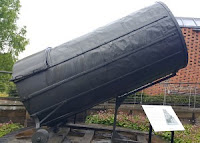Stonehenge: Why Bother to Visit a Stone Circle of 4000 Years?
There are countless speculations on why and how the Stonehenge was built. Many questions have been asked but only a little portion of them were answered. Some believe it was a place of worship or a cremation cemetery (as the archeologists have found many cremated human remains in the surrounding pitch), some think it is an astronomical calendar for understanding the seasons, eclipses and solar events and some believe it was built for medical purposes. Although there are rumours about it being built by the extraterritorial beings or slaves who wished to please their masters, when we think of the circumstances in 3000 BC, the most reasonable explanation seems to be the volunteers who foresaw the need for such a structure.

It is hard to understand with our 21st century perceptions, how did the Neolithic people built such a structure, by only using some simple tools and manpower. Though through scientific findings, there are some explanations available.

First of all, Stonehenge was not built as we see it today. It was gradually built in around a thousand years, beginning in around 3700 BC, continuing until the 1600 BC. At first, it wasn't even a "stone" henge, rather, it was a wooden henge, consisting of a timber circle. A "henge" refers to a particular type of earthwork of the Neolithic period, typically consisting of a circular bank with an internal ditch surrounding a central flat area. The models in the visiting centre present its gradual development (see the picture).
The primary stone settings were added to the construction by 2500 BC. The larger stones are called Sarsen while the smaller ones in the middle are called the Blue stones. These stones have different temperatures and this difference supports the claim that this structure was built for medical purposes.
 Transporting these stones are the main source of controversion about the building process of Stonehenge. The larger Sarsen stones are sandstones weighing about 25-30 tons, typical to Marlborough Downs, a place 32 km away from the Stonehenge. While the Blue stones, weighing around 2-5 tons each, come from the Wales, from a distance around 250 km. The stones are possibly brought by human effort on the sledges, or via water networks.
Transporting these stones are the main source of controversion about the building process of Stonehenge. The larger Sarsen stones are sandstones weighing about 25-30 tons, typical to Marlborough Downs, a place 32 km away from the Stonehenge. While the Blue stones, weighing around 2-5 tons each, come from the Wales, from a distance around 250 km. The stones are possibly brought by human effort on the sledges, or via water networks.Main distinguishing feature of the Stonehenge from the other Stone Circles across the world is the insertion of horizontal stones on top of the vertical ones. Their insertion is typically like lego pieces, perfectly fitting each other through some indentations and bulges.
When it was re-discovered by the Romans in the 1st century AD, the Stonehenge was thought to be a Druid Temple, belonging to an ancient pagan religion, practiced by the locals in the area. Druids had nothing to do with the establishment of Stonehenge but adopted it as a sacred place for their religion. The Stonehenge was built by the Neolithic people of the time, and you can perceive the conditions they have lived through the replica houses in the visitor centre. The visitor centre describe these people as "sophisticated" and "organised."
Druids who still practice this religion, visit Stonehenge, especially during the solstices when the Stone Circle is open for public. They mostly perceive it as a prehistoric temple aligned with the movements of the sun.
Today, Stonehenge is mostly a ruin due to the ignorance and insensitivity of the modern people who at first failed to appreciate the value of these monuments and approached to them as mere stones. Until the 1950s, this place was open to public all the time where people came for picnics or camping purposes. They usually chipped the stones for building purposes or as a souvenir.
At the end, Stonehenge is worth a visit, especially to embrace the culture, priorities and beliefs of our ancestors who somehow found the need to carry such stones from far away lands and establish such an elaborate structures. But make sure to visit the exhibition in the visitor centre before you go up the stonehenge with the shuttle bus, to give a proper meaning to what you will see. Even with the audio guide, you might be missing the essence of the establishment. But the visual models in the exhibition make everything more clear for you to understand.




Comments
Post a Comment